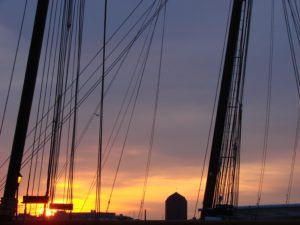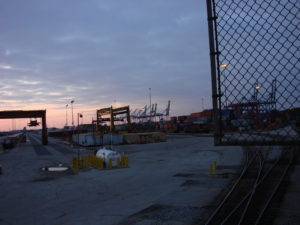there could be robotic mastodons
roaming the city at night by gaslight
eating litter and defecating art.
but our wealth is too employed
for the genius all around.
cimon starves on holiday street

there could be robotic mastodons
roaming the city at night by gaslight
eating litter and defecating art.
but our wealth is too employed
for the genius all around.
cimon starves on holiday street

swimming and flying
weaving ocean and wind into a jet stream,
wood and canvass
carved into an arrow hurtling with its bow,
constantly propelled.
swift upon another swifter away in battle.
carrying cargo with express and beauty.
finally refitted for slave transport.
just a rotting rusting weapon

morning is warm and still in the low sun
for musters, examinations, and statements
pumps discharging.
there is the fort
the harbor in the distance
before steeples and shot towers.
now waiting

warehouses around the water
tobacco and snuff
wheat and corn and flour and bread
sugar and rum
iron
paper and wool
oak and poplar and mahogany and spruce
tar and turpentine
orange juice and coconuts
rice and cotton
fish and furs and skins
pork and beef and butter and cheese
beeswax and candles
nails and boots and assembling ships.
baltimore bricks

mr hanna transacting
on planks on piles of privy waste
and dredgings and oyster shells.
lost his small fortune in too many shipments to trinidad

the eagle and dragon will become each other
only as snake and skunk
horse and hedgehog
goat and rabbit
monkey and moose
rooster and reindeer
dog and deer
pig and puma
rat and squirrel
ox and otter
tiger and wolf.
prosper

durum, red, and white
from rolling amber waves
in frederick, baltimore, harford
york and lancaster.
milled and moved across oceans
feeding armies of empire
and the world.
with star power filtered for a billion years

dispense justice
promote virtue
guarantee harmony
preserve the law
respect property and neighbors
replace ignorance and superstition with knowledge of right and wrong.
inspect flour
cull staves and shingles
measure grain
weigh hay and cord wood.
receive specified fees

to the channel of the river
that penetrated a ledge
wharves of pine cord
one thousand feet.
named when it ran fast and cold
and the channel was glens and gorges
stretching from sunrise to sunset

horse, cart, and wagon
clatter over the public bridge
between meadow and marsh
over the stream.
from west and north and east
spinners and weavers, tanners, millers and brewers
barbers and tailors and shoemakers
coopers and wheelwrights and carpenters
butchers and bakers
laborers.
midwives
